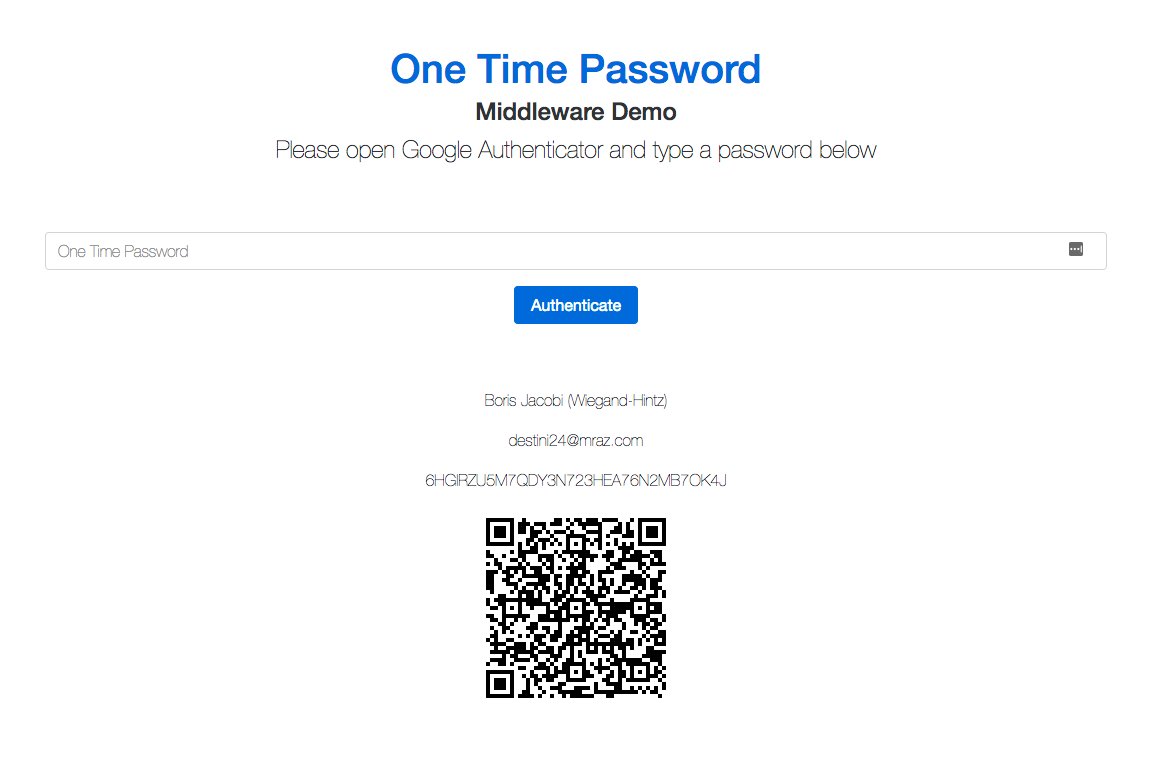nocksapp / google2fa-laravel
A One Time Password Authentication package, compatible with Google Authenticator.
Installs: 13
Dependents: 0
Suggesters: 0
Security: 0
Stars: 0
Watchers: 1
Forks: 193
pkg:composer/nocksapp/google2fa-laravel
Requires
- php: >=5.4
- laravel/framework: ~5
- pragmarx/google2fa: ~2.0
Requires (Dev)
Suggests
- bacon/bacon-qr-code: Required to generate inline QR Codes.
This package is auto-updated.
Last update: 2025-12-19 04:07:15 UTC
README
Google Two-Factor Authentication for PHP Package for Laravel
Google2FA is a PHP implementation of the Google Two-Factor Authentication Module, supporting the HMAC-Based One-time Password (HOTP) algorithm specified in RFC 4226 and the Time-based One-time Password (TOTP) algorithm specified in RFC 6238.
This package is a Laravel bridge to Google2FA's PHP package.
Demos, Example & Playground
Please check the Google2FA Package Playground.
Here's an demo app showing how to use Google2FA: google2fa-example.
You can scan the QR code on this (old) demo page with a Google Authenticator app and view the code changing (almost) in real time.
Requirements
- PHP 5.4+
Compatibility
This package is compatible with
- Laravel 4.1+
- Laravel 5+
Installing
Use Composer to install it:
composer require pragmarx/google2fa-laravel
If you prefer inline QRCodes instead of a Google generated url, you'll need to install BaconQrCode:
composer require "bacon/bacon-qr-code":"~1.0"
Installing on Laravel
Laravel 5.5
You don't have to do anything else, this package autoloads the Service Provider and create the Alias, using the new Auto-Discovery feature.
Laravel 5.4 and below
Add the Service Provider and Facade alias to your app/config/app.php (Laravel 4.x) or config/app.php (Laravel 5.x):
PragmaRX\Google2FALaravel\ServiceProvider::class, 'Google2FA' => PragmaRX\Google2FALaravel\Facade::class,
Publish the config file
php artisan vendor:publish --provider=PragmaRX\\Google2FALaravel\\ServiceProvider
Using It
Use the Facade
use Google2FA; return Google2FA::generateSecretKey();
In Laravel you can use the IoC Container
$google2fa = app('pragmarx.google2fa'); return $google2fa->generateSecretKey();
Middleware
This package has a middleware which will help you code 2FA on your app. To use it, you just have to:
Demo
Click here to see the middleware demo:
Using the middleware
Add the middleware to your Kernel.php:
protected $routeMiddleware = [ ... '2fa' => \PragmaRX\Google2FALaravel\Middleware::class, ];
Using it in one or more routes:
Route::get('/admin', function () { return view('admin.index'); })->middleware(['auth', '2fa']);
Configuring the view
You can set your 'ask for a one time password' view in the config file (config/google2fa.php):
/** * One Time Password View */ 'view' => 'google2fa.index',
And in the view you just have to provide a form containing the input, which is also configurable:
/** * One Time Password request input name */ 'otp_input' => 'one_time_password',
Here's a form example:
<form action="/google2fa/authenticate" method="POST"> <input name="one_time_password" type="text"> <button type="submit">Authenticate</button> </form>
One Time Password Lifetime
Usually an OTP lasts forever, until the user logs off your app, but, to improve application safety, you may want to re-ask, only for the Google OTP, from time to time. So you can set a number of minutes here:
/** * Lifetime in minutes. * In case you need your users to be asked for a new one time passwords from time to time. */ 'lifetime' => 0, // 0 = eternal
And you can decider whether your OTP will be kept alive while your users are browsing the site or not:
/** * Renew lifetime at every new request. */ 'keep_alive' => true,
Manually logging out from 2Fa
This command wil logout your user and redirect he/she to the 2FA form on the next request:
Google2FA::logout();
If you don't want to use the Facade, you may:
use PragmaRX\Google2FALaravel\Support\Authenticator; (new Authenticator(request()))->logout();
Documentation
Check the ReadMe file in the main Google2FA repository.
Tests
The package tests were written with phpspec.
Author
License
Google2FA is licensed under the BSD 3-Clause License - see the LICENSE file for details
Contributing
Pull requests and issues are more than welcome.


